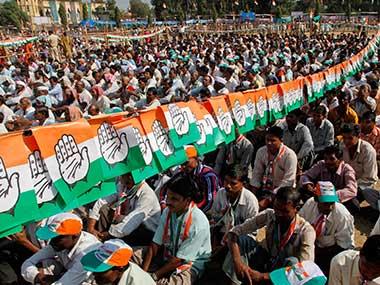No ‘Assembly’ For Women
Once again, Karnataka has an Assembly that has no women. What are the implications for legislation?
By Christina Daniels May 9, 2013 6:14PM


The 2013 Assembly elections in Karnataka have generated tremendous national interest, not least of all because the first ever BJP government in South India was shown the door. But the elections that had a record 70.23% voter turnout, brought only six woman MLAs into the Assembly. And five of them are first- time entrants into the Assembly!
So while religious, caste and class equations have been taken into consideration, are women adequately represented in the fourteenth assembly? Could this translate into fewer opportunities for proactive legislation that genuinely impacts women?
The imbalance begins at the candidature level itself. In Karnataka, there were just 170 females candidates in the fray, against 2778 male candidates in 2013. This inspite of the fact that an almost equal number of men and women came out to vote—22.22 million men voters against 21.35 million women voters.
So while women seem to be trusted to vote, they do not seem to be trusted to lead on their own merit. When they do enter politics, they seem to need the backing of their family or a powerful male figure. Yet, it must be said that the new assembly is still an improvement on the thirteenth assembly, which had only five women MLAs or a 2.67% representation.
Interestingly, women had the best representation during the 50s and 60s, even touching 18 elected representatives in 1962. But since then, the entry of both money and muscle power into politics have created the perception that politics is unsuitable women. So, while women achievers have made their mark in various spheres, they remain under represented here.
It should come as no surprise then that when women protestors marched on the streets of Delhi after the rape of a young student there, they were labeled as ‘painted’ and ‘dented’ women by a male politician. If women do not participate in legislation, they cannot expect their views to be adequately represented.
Yet, the Panchayat system shows that there is hope yet, and that this trend can be reversed. Once 50% reservation for women was introduced here, their representation in Village Panchayats improved dramatically. While many of these women function as proxies for their husbands, it is still a beginning at the grassroots level.
I have never been a supporter of reservation. But six women in the Karnataka Assembly, spread over three different political parties, is extremely disheartening. Where is the critical mass in any single party to lobby effectively for women’s issues? It is necessary to correct this imbalance if legislation is to be representative of all sections of society.
2 टिप्पणियां:
.सार्थक जानकारी हेतु आभार.. मेरी किस्मत ही ऐसी है .
साथ ही जानिए संपत्ति के अधिकार का इतिहास संपत्ति का अधिकार -3
महिलाओं को अपनी शक्ति का परिचय खुद देना होगा..
एक टिप्पणी भेजें